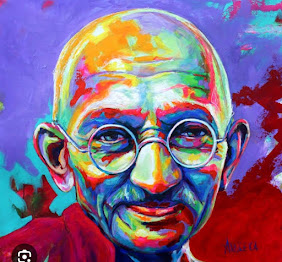THE CRICKET HISTORY WORLD 16th century(கிரிக்கெட் வரலாறு உலகம்)16th நூற்றாண்டு
THE CRICKET HISTORY
1.Origin:
Refers to the game's beginnings in England during the 16th century.
2.Test Cricket:
The oldest format, established in 1877, emphasizing tradition and competition between countries.
3.World Cup:
A significant tournament first held in 1975, showcasing international teams.
4.The Ashes:
A historic Test series between England and Australia, symbolizing fierce rivalry since 1882.
5.T20 Revolution:
The emergence of Twenty20 cricket in the early 2000s, transforming the game's popularity and format
1. Origins of Cricket
Cricket traces its roots back to the 16th century in England. Initially played by children in rural areas, the game evolved into a structured sport by the 17th century. The earliest known mention of cricket dates back to 1598, when a court case referenced it as a popular pastime in the Sussex region. By the 18th century, it began gaining prominence among adults, particularly in the south of England, with established teams and local clubs forming.
2. Development of Rules
The codification of cricket rules began in the 18th century, with significant contributions from the Marylebone Cricket Club (MCC), founded in 1787. The MCC established the Laws of Cricket, which set out regulations for gameplay, equipment, and player conduct. Key developments included the introduction of the three-stump wicket, the concept of bowler's delivery, and the establishment of the bowler's run-up. These rules laid the groundwork for modern cricket.
3. The Birth of Test Cricket
Test cricket, recognized as the highest standard of the sport, began in 1877 with the first official Test match between Australia and England in Melbourne. The format emphasized skill and endurance, lasting up to five days. The late 19th and early 20th centuries saw the rise of iconic players and legendary matches, solidifying Test cricket's prestige. This era also marked the establishment of the Ashes, a fierce rivalry symbolizing the contest between England and Australia.
4. The Ashes Rivalry
The Ashes originated in 1882 after a Test match in which Australia defeated England at The Oval. Following the loss, a mock obituary was published, claiming English cricket had died, and "the body will be cremated and the ashes taken to Australia." The term "The Ashes" was subsequently adopted for the series contested between the two nations. This rivalry has produced countless memorable moments and has become synonymous with cricketing excellence, fueling passion among fans.
5. The Impact of the World Wars
Cricket faced significant challenges during the World Wars, as many players enlisted in the military. Matches were canceled, and the game's popularity waned. However, post-war periods saw a resurgence, with the return of players and the establishment of new competitions. The 1945 season marked a revival, and cricketers became symbols of resilience. This period also set the stage for the global expansion of the sport, as countries that were once under colonial rule began to establish their own teams and competitions.
6. The Rise of One-Day Internationals (ODIs)
The introduction of limited-overs cricket in the 1960s revolutionized the game. The first ODI was played in 1975, coinciding with the inaugural Cricket World Cup, which showcased the format's excitement and pace. ODIs quickly gained popularity, leading to a new generation of fans. The format allowed for thrilling matches and dramatic finishes, ultimately becoming a staple of international cricket. Notable tournaments, such as the 1983 World Cup, transformed the landscape of cricket, with India’s victory heralding a new era.
7. The T20 Revolution
The advent of Twenty20 (T20) cricket in the early 2000s brought unprecedented change to the sport. Launched in England in 2003, T20 matches featured a condensed format, with each team facing 20 overs. The explosive nature of T20 cricket attracted a younger audience and led to the establishment of various domestic leagues, such as the Indian Premier League (IPL). The format's success redefined cricket marketing, broadcasting, and sponsorship, contributing to a global surge in the sport’s popularity.
Conclusion
The history of cricket is a tapestry woven with cultural significance, evolution of rules, and the spirit of competition. From its humble origins to becoming a global phenomenon, cricket has adapted to the times, continually engaging fans across generations. The sport’s ability to evolve while retaining its core values reflects its enduring appeal, making cricket not just a game, but a cherished tradition for millions worldwide



Comments
Post a Comment